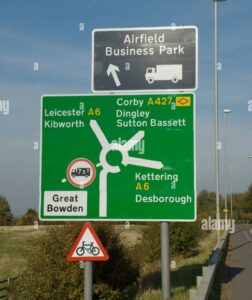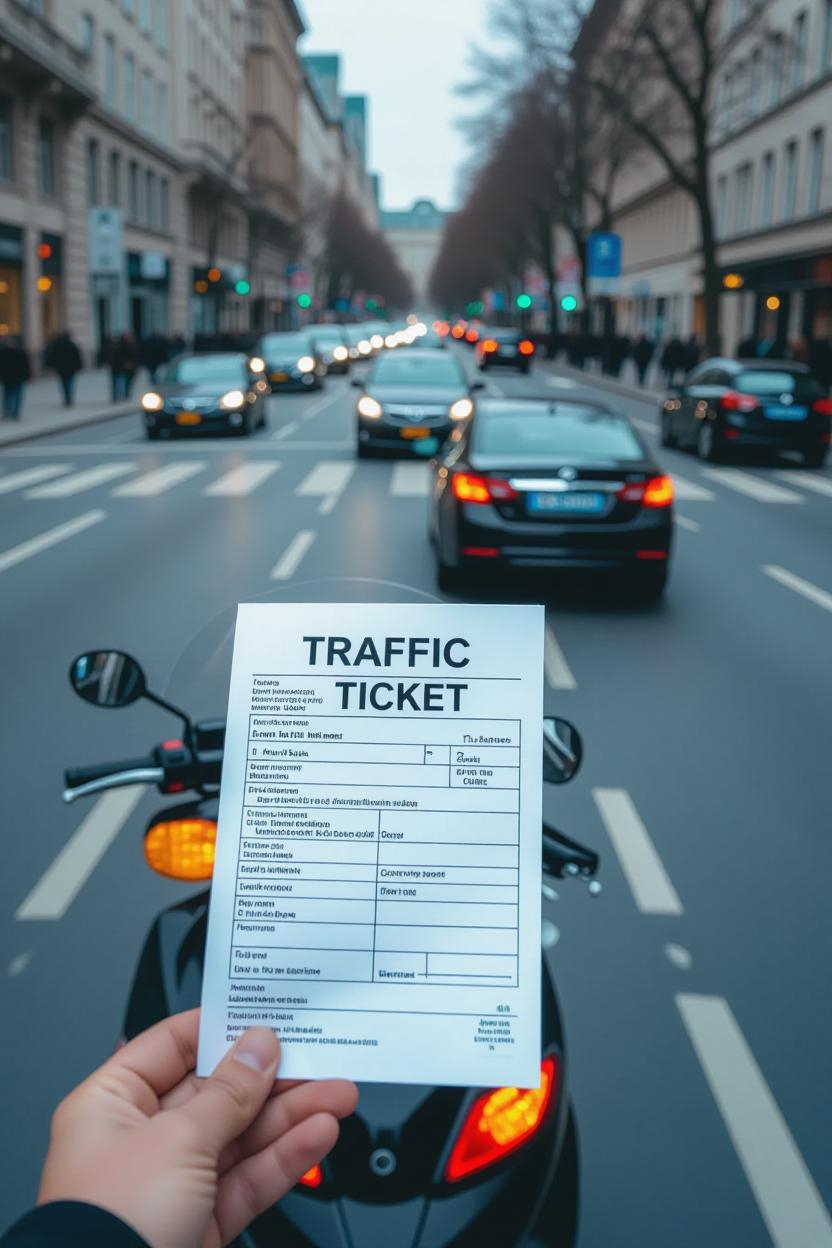Ring Road Sign | All You Should Know
What’s A Ring Road Sign?
A ring road sign is a traffic sign that gives information and direction about a ring road, which is a road built around a city or town.
The main purpose of the sign is to guide drivers, reduce traffic inside the city, and make travel faster and safer.
These signs are usually placed near entry points, exits, and intersections, showing the route number or direction of the ring road.
By following ring road signs, drivers can avoid congestion in the city center and reach their destinations more easily.
Purpose Of Ring Road Sign

1. Guide Drivers:
- Ring road signs help drivers find the correct route around a city without entering busy central areas.
2. Reduce Traffic Congestion:
- By directing vehicles to use the ring road, traffic inside the city is reduced, leading to smoother movement.
3. Provide Clear Directions:
- These signs show entry points, exits, and directions, making navigation easy for local and out-of-town drivers.
4. ⏱ Save Time and Fuel:
- Using the ring road often shortens travel time and helps avoid traffic jams.
5. Improve Road Safety:
- Clear signage helps prevent confusion, reduces accidents, and ensures better traffic flow.
Features Of Ring Road Signs
1. Clear Symbol or Shape:
- Usually includes a circular or ring symbol to represent the ring road.
2. Directional Arrows:
- Shows the direction of travel and exit points to help drivers navigate easily.
3. Route Number or Name:
- Displays the ring road name or number (e.g., Ring Road 1) for easy identification.
4. High Visibility:
- Uses bright colors (commonly green or blue) and reflective materials so it’s visible both day and night.
5. Strategic Placement:
- Placed before junctions, entry points, and exits to give drivers enough time to make safe decisions.
6. Simple and Easy to Read:
- Uses clear fonts and symbols to ensure drivers can understand it quickly, even at high speed.
7. Traffic Flow Guidance:
- Helps divert traffic away from crowded city areas, improving road safety and reducing congestion.
Types Of Road Sign For A Road And Their Signage Needs?
Ring roads can be designed in different ways depending on the size of the city, traffic volume, and transportation needs. Each type requires specific signage to ensure safe and smooth traffic flow.
1. Inner Ring Road
Description:
- Built close to the city center.
- Connects important areas within the city.
- Usually handles moderate traffic and allows access to multiple urban routes.
Signage Needs:
- Directional signs showing nearby landmarks and important city routes.
- Speed limit signs due to mixed traffic (buses, cars, two-wheelers).
- Lane guidance signs to help drivers choose correct exits and entries.
- Warning signs for pedestrian crossings or signals.
2. Outer Ring Road
Description:
- Constructed around the outer edge of the city.
- Used mainly for bypassing city traffic and for heavy vehicles or long-distance travel.
- Reduces congestion in inner areas.
Signage Needs:
- Advance direction signs indicating exits, entry points, and connecting highways.
- Distance signs to major destinations.
- Regulatory signs (speed limits, vehicle restrictions).
- Overhead gantry signs for better visibility at high speeds.
3. Intermediate Ring Road (where applicable)
Description:
- Lies between the inner and outer ring roads.
- Connects residential and commercial zones, distributing traffic between inner and outer loops.
Signage Needs:
- Guide signs to divert local and through-traffic appropriately.
- Route number signs for clarity.
- Informational signs about service areas, public transport hubs, or key junctions.
4. Express Ring Road (High-speed ring road)
Description:
- Built for high-speed travel with limited access points.
- Often used for intercity or freight movement.
Signage Needs:
- Advance exit signs placed well before interchanges.
- Overhead gantry signs with large fonts for visibility at high speeds.
- Warning signs for curves, merges, and toll booths.
- Emergency and service signs (rest areas, petrol pumps, hospitals).
Also Read On:
- Different Roundabout And Mini Roundabout Sign.
- Staggered Junction Sign | All You Should Know
- What Shape Are Traffic Signs Giving Orders.
- Who Should Obey Diamond Shaped Traffic Signs.
- Which Colour Follows The Green Signal At A Puffin Crossing.
Placement And Location Strategies For Ring Road Sign
Proper placement and location of ring road signs are essential to ensure driver safety, smooth traffic movement, and clear route guidance.
Well-planned signage helps drivers make quick, correct decisions and reduces congestion.
1. Advance Placement
- Signs should be placed well before intersections, exits, or entry points.
- Gives drivers enough time to read, understand, and react.
Common distances:
- Urban areas: 100–150 meters before the junction.
- High-speed or express ring roads: 300–500 meters in advance.
2. Strategic Locations
- Entry and Exit Points: Clear signs to show where to join or leave the ring road.
- Intersections & Interchanges: Directional signs to indicate connecting roads or highways.
- Service Areas & Toll Plazas: Informational signs for fuel stations, rest areas, or payment points.
- Critical Curves or Merges: Warning signs for safety.
3. Visibility and Height
- Signs should be placed at a standard height and angle for maximum visibility.
- Should be visible both during the day and at night (reflective or illuminated).
- Overhead gantry signs are preferred on outer or express ring roads.
4. Consistency and Repetition
- Repeating signs at regular intervals reassures drivers they’re on the correct route.
- Consistent design and placement help drivers **quickly recognize and reinform.
Effective placement and location strategies make ring road signage easy to see, easy to understand, and safe to follow. Properly positioned signs reduce confusion, prevent accidents, and ensure smooth traffic movement on ring roads.
Frequently Asked Questions

1. What is a ring road sign?
- A ring road sign is a traffic sign used to guide drivers on or toward a ring road — a circular or semi-circular road built around a city to reduce congestion in central areas.
2. Why are ring road signs important?
- They help drivers navigate efficiently, reduce traffic inside the city, and improve road safety by providing clear directions and information about exits, entries, and destinations.
3. Where are ring road signs usually placed?
- They are placed at entry and exit points, before junctions, and along the ring road at regular intervals to ensure smooth navigation.
4. What information do ring road signs provide?
- Route number or name (e.g., Ring Road 1)
- Directions to major destinations
- Distances to upcoming exits
- Speed limits or restrictions
- Warnings for curves, merges, or tolls
5. What colors are commonly used for ring road signs?
- Green: Common on highways and outer ring roads.
- Blue: Often used on urban or express routes.
- White/Yellow: Used for regulatory or warning signs.
6. How far in advance should ring road signs be placed?
- Urban roads: 100–150 meters before the junction.
- High-speed or express ring roads: 300–500 meters in advance.
7. Who is responsible for installing ring road signs?
- Typically, road authorities or transportation departments are responsible for designing, placing, and maintaining these signs according to national road standards.
8. Are ring road signs the same in all countries?
- No. While the concept is similar, the design, color, language, and symbols can vary depending on national road regulations and standards.
9. Do ring road signs help reduce traffic congestion?
- Yes. By guiding through-traffic away from city centers, they ease pressure on inner roads, reduce travel time, and improve traffic flow.
10. What makes an effective ring road sign?
- Clear and simple message
- High visibility (day and night)
- Proper placement at key locations
- Standardized symbols for quick recognition


